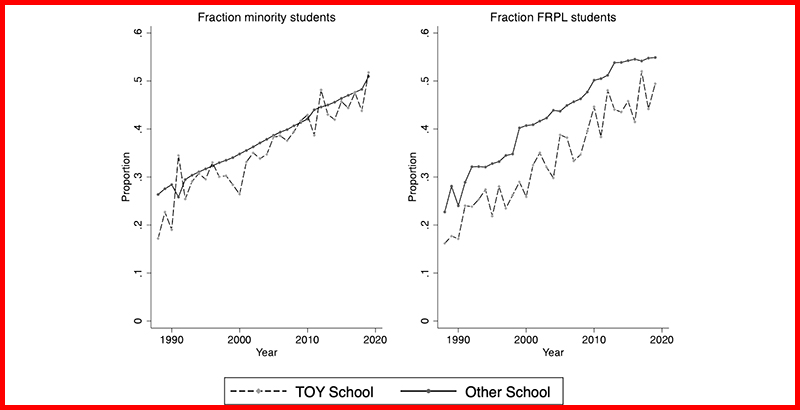Our 9 Best Education Articles from May: The Teachers Who Kept Families Afloat During the Pandemic, How Federal Relief Funds Can Help Students Catch Up & More
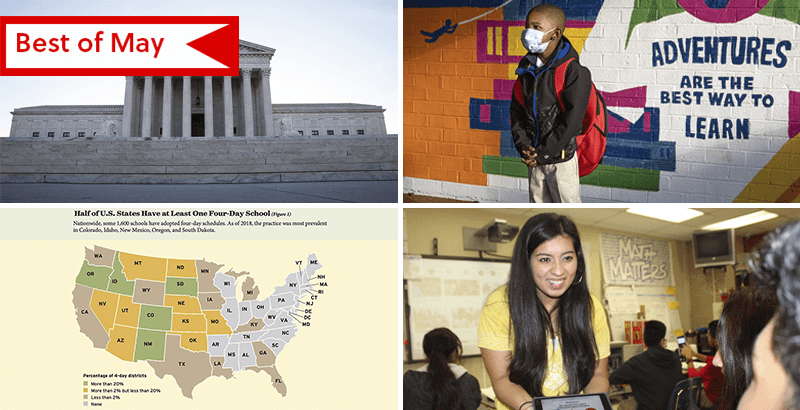
Get essential education news and commentary delivered straight to your inbox. Sign up here for The 74’s daily newsletter.
Looming decisions over how schools should prioritize federal relief funds, emerging plans for how to catch kids up this summer and a new supreme court case surrounding students’ free speech rights — these were just a few of the biggest storylines we covered in May. And our most popular item this month: An emotional tribute from families about the educators who helped them get through the darkest days of the pandemic.
From new research surrounding the downside of four-day school weeks to multiple stories about student discipline — and school discipline reform — here were our most popular articles of the month:
‘She Made Me Feel Like I Wasn’t Entirely Alone’: 10 Students and Families Pay Tribute to the Teachers Who Helped Them Endure the Pandemic
Teacher Appreciation: As the mother of a teen with Down syndrome, Krystal Gurganus has seen her son Landon face his share of challenges. So it came as a shock when special education teacher Hannah Land taught Landon to read this year, via Zoom. “I’ve never heard my child read before. And he’s 14 years old,” she said. “So this was in that moment when I was sitting beside him on a computer, and I hear him read an actual story for the very first time … it was mind-blowing that this teacher was able to engage my child through a screen.” Every year, teachers like Land touch countless students’ lives with inspiring lessons, heartfelt advice and ice cream parties — but amid COVID-19, those gestures took on new meaning. From an art teacher who helped a student come to terms with her father’s death to an educator who moved out of her home so she could educate kids in person and another who bought tablets for her student’s siblings, parents and students from around the country shared stories about the educators who helped them get through the pandemic school year. Laura Fay introduces these 10 amazing teachers.
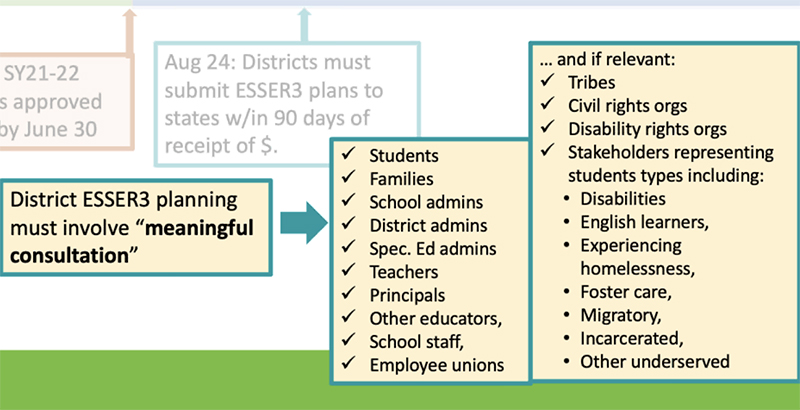
Early Look at District Plans to Spend Billions in Federal Relief Funds Shows Lack of Focus on Learning Recovery
School Funding: States have until Monday to distribute $81 billion in federal relief funds to districts — two-thirds of the total for K-12 schools in the American Rescue Plan. And while the law requires districts to allocate 20 percent of their funding on learning loss, the Georgetown Edunomics Lab’s early review of spending plans shows they’re not prioritizing efforts to help students catch up, such as tutoring and extending the school year. Rather, they are using the money to fill budget gaps, hire staff and issue “thank you” bonuses to teachers. The relief bill, passed in March, represents the largest-ever, one-time influx of federal funds for K-12, setting up a “fast and furious” planning process for districts over the next few months, said Edunomics Lab Director Marguerite Roza. Meanwhile, leaders are facing heightened scrutiny from parents and advocacy groups looking to hold leaders accountable for the funds, and districts are expected to make extensive efforts to get input from parents, educators and students, Roza said. “That means districts can’t go into a dark, smoke-filled room and make a plan.” Read Linda Jacobson’s full report.
Kids Keep Getting Hit at School, Even Where Corporal Punishment is Banned
Student Safety: Video of a Florida elementary school principal spanking a 6-year-old with a wooden paddle last month sparked national outrage and calls for her arrest. Though the district where the paddling took place prohibits corporal punishment, the state does not, and the principal was not criminally charged. The incident highlights a troubling reality across the country: Even in states and districts where corporal punishment is banned, kids are still getting hit in school. About a dozen districts in states where the practice is outlawed reported using it on students more than 300 times during the 2017-18 school year, according to a 74 analysis of the most recent civil rights data from the U.S. Department of Education. Of those, Chicago Public Schools accounted for the lion’s share, with children in the nation’s third-largest district struck 226 times in school that year. In Louisiana, where paddling is permitted except on students with disabilities, data show that special education students were hit nearly 100 times in 2017-18. While the practice has its proponents among some educators and those who cite parental rights, considerable research shows its harmful effect on children — and students of color and those with disabilities are disproportionately subjected to it. “It’s barbaric, and it opens the door to abuse,” the Florida lawyer representing the mother of the girl who was paddled told Mark Keierleber. Read our full report.
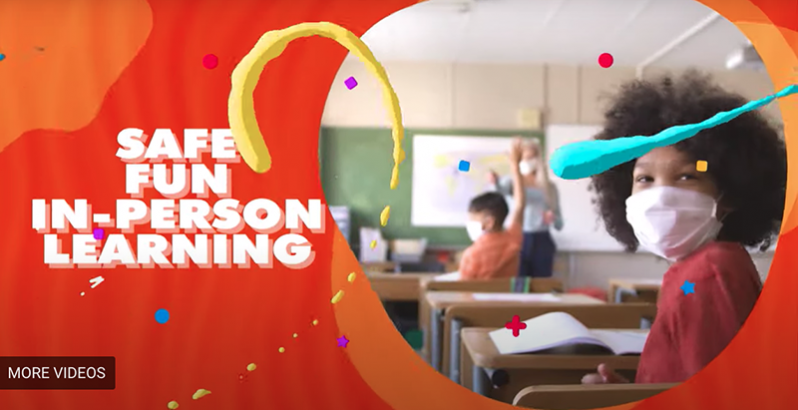
Cleveland’s Kinder, Gentler Summer School: District Mixes Pure Academics With Enrichment Activities to Entice Kids Back to Class after COVID Struggles
Accelerating Learning: Summer schools face a huge challenge in overcoming academic shortfalls after a school year disrupted by the pandemic. But in Cleveland, and some other districts around the country, summer classes are being combined with fun projects and activities like sports, arts and neighborhood-improvement efforts that expand learning beyond just math and English lessons. Cleveland district officials say their program, featured last night on “NBC Nightly News,” focuses on making students feel welcome at school. “We’re really thinking about how the recovery looks in the next one to three years, and not the notion that somehow, in one summer, we’re going to recover everything from the pandemic,” said district CEO Eric Gordon. Read Patrick O’Donnell’s full report.
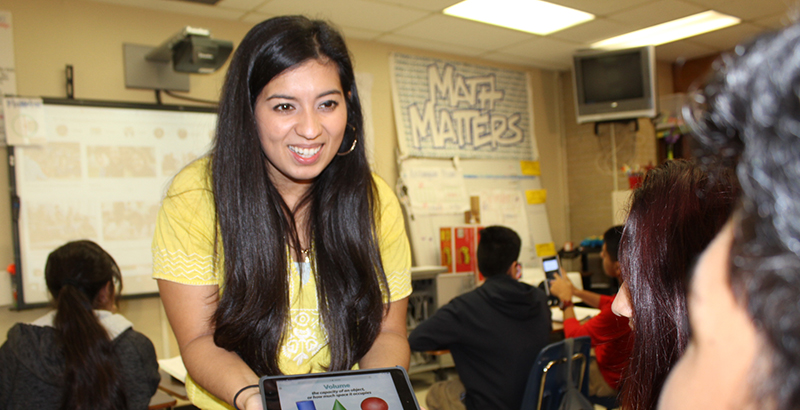
A Big Raise For Texas Teachers: New Plan Will Give Top Educators $100,000 to Fight COVID Learning Loss at State’s Poorest Schools
Teacher Quality: When Texas created its Teacher Incentive Allotment as part of a historic 2019 school funding bill, it came with a compromise: Conservatives could have incentive pay — tying compensation to performance — but the largest stipends would go to teachers in the state’s poorest schools. “The Teacher Incentive Allotment is not a grant. It is a commitment to shift the culture of your district,” said Mohammed Choudhury, San Antonio ISD associate superintendent of strategy, talent and innovation. To get the money, districts must create a teacher evaluation system based on classroom observation and students’ academic growth, instead of single-year test scores that say more about neighborhood income than teacher quality. Two years later, 82 school districts and charter schools have been approved to receive funds from the allotment, and dozens of teachers will make over $100,000 this year working to combat COVID learning loss among some of the state’s most disadvantaged students. What’s best, said Longview ISD Chief Human Resources Officer John York, is that the most skilled teachers are staying in high-need schools. “The kids are the winners.” Read Bekah McNeel’s full report.

In Major First Amendment Case, SCOTUS Appears Ready to Uphold Students’ Free-Speech Rights Outside the Schoolhouse Gate
Supreme Court: Students’ First Amendment rights are on the line after the Supreme Court heard oral arguments in a case about a profane Snapchat post that could define schools’ authority to regulate off-campus speech — an issue that’s particularly relevant in the social media era. The justices, and the court’s 6-to-3 conservative majority, appeared ready to uphold students’ free speech rights off campus while grappling with the reality that social media posts can easily spill over into schools and disturb the learning environment. At issue is a Pennsylvania high schooler’s 2017 Snapchat post venting frustration because she didn’t make the varsity cheerleading squad, and whether her off-campus rant violated a Vietnam War-era Supreme Court precedent that lets educators punish student speech that causes a “substantial disruption.” Leading education groups and the Biden administration argued that schools must be able to hold students accountable for off-campus speech that is harassing or threatens violence. But justices were skeptical that the post was anything more than an expression of frustration laced with F-bombs. If schools could discipline kids for off-campus cursing, then “every school in the country would be doing nothing but punishing,” Justice Stephen Breyer said. Read Mark Keierleber’s full report.
Reinventing School Discipline in Texas: After Years of Unequal Punishment for Black Students, Dallas ISD Moves Toward Historic End to Most Suspensions
School Discipline: Texas’s second-largest school district is using tools it honed during the pandemic to end suspensions for low-level offenses. By giving students access to teletherapy and remote learning opportunities in what it calls reset centers, administrators plan to address the root causes of behavior issues without interrupting learning. “Suspension was never the right structure, but it is certainly not the right structure coming out of a global pandemic,” former Dallas school board trustee Miguel Solis told reporter Bekah McNeel. In addition to additional staff and technology, Solis said, teacher training will be key to making the new policy a success. “The teacher student dynamic is going to be radically different,” Solis said. Read our full report.
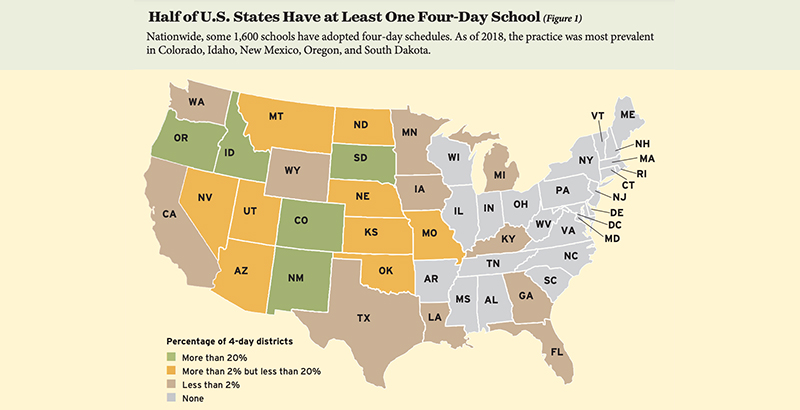
Schools that Switched to a Four-Day Week Saw Learning Reductions. What Does that Mean for the Pandemic’s Lost Instructional Time?
Learning Loss: Even before COVID-19, a fast-growing segment of American schools ran on a four-day week. The trend is partly a concession to scheduling challenges and lengthy commutes in many rural areas, but also a reflection of cost-cutting measures even years after the Great Recession. According to one analysis, over 20 percent of school districts in five Western states now operate four days per week — and according to a recently published study of one of those states, Oregon, the academic results can be dangerous. The research, featured in the journal Education Next, found that when schools shifted from a five- to a four-day schedule, students lost between three and four hours of instructional time each week and test scores dropped in both math and reading. Even worse, the longer schools stuck with the new schedule, the sharper the decline became. The findings are particularly striking in light of learning losses inflicted by school closures during the pandemic, which at least partially result from lack of time in classrooms. “Hopefully, some of these knowledge losses can be caught up,” study author and Oregon State University economist Paul Thompson told The 74’s Kevin Mahnken. “But there are questions about some of the long-run ramifications on outcomes besides achievement.” Read our full report.
Researchers Combed Through Over 1,600 Teachers of the Year Since 1988. Here’s What They Learned about the Winners
Big Picture: The Teacher of the Year award is the most prominent national program for recognizing and promoting excellence in K-12 instruction — and one of the oldest, dating to 1952. Each year, a winner is chosen from every state and territory, and the national awardee gets a celebration at the White House and a year to advocate for the profession. But what kinds of schools do these exemplars come from? Researchers decided to find out, studying state- and national-level teachers of the year going back to 1988. Their findings: Winners are disproportionately likely to work in high schools (and large schools more generally); they tend to teach English or social studies rather than health, foreign languages or special education; and, perhaps most strikingly, they’re employed at schools with lower than average numbers of low-income students. Read Kevin Mahnken’s full report.
— 2021 Teacher of the Year: Immigrant, bilingual special educator named National Teacher of Year (Read more)
Every month, we round up our most popular and shared articles from the past four weeks. (Go deeper: See our top highlights from April, March and February right here)
Get stories like these delivered straight to your inbox. Sign up for The 74 Newsletter

;)



